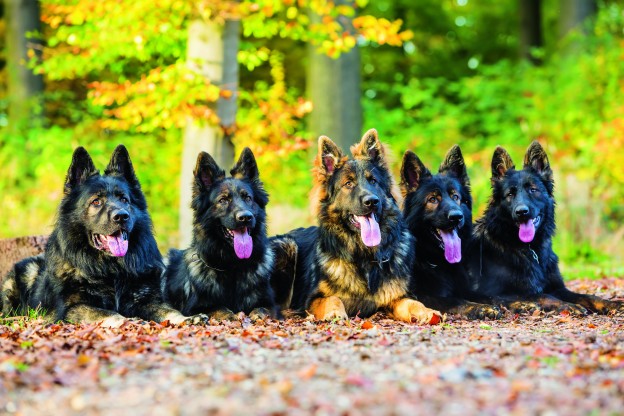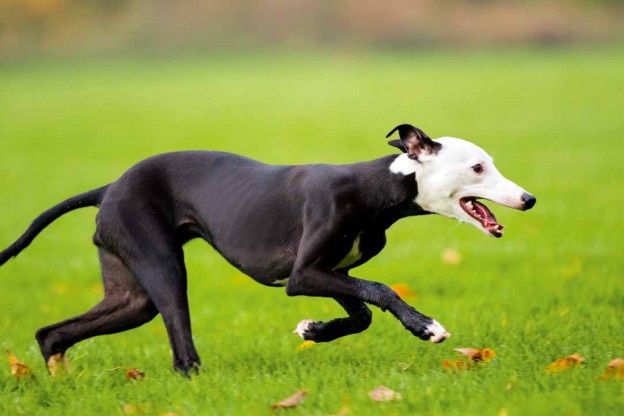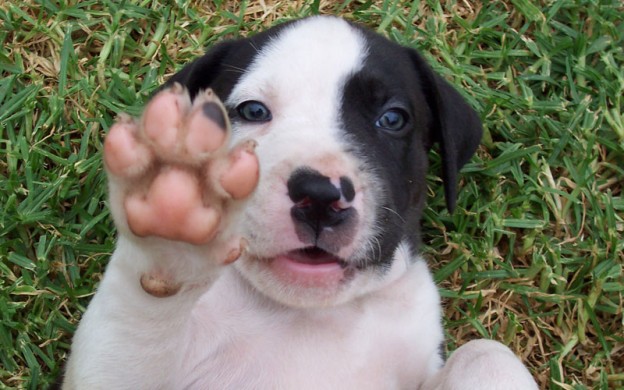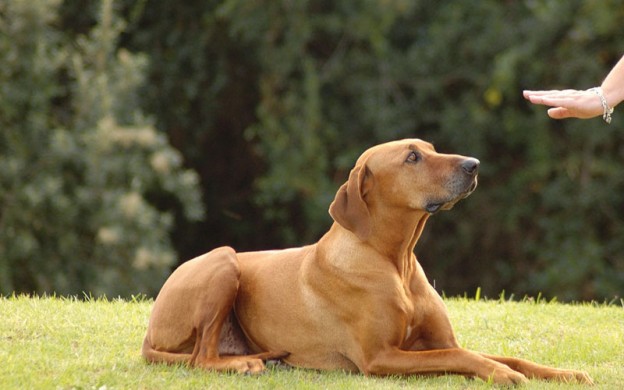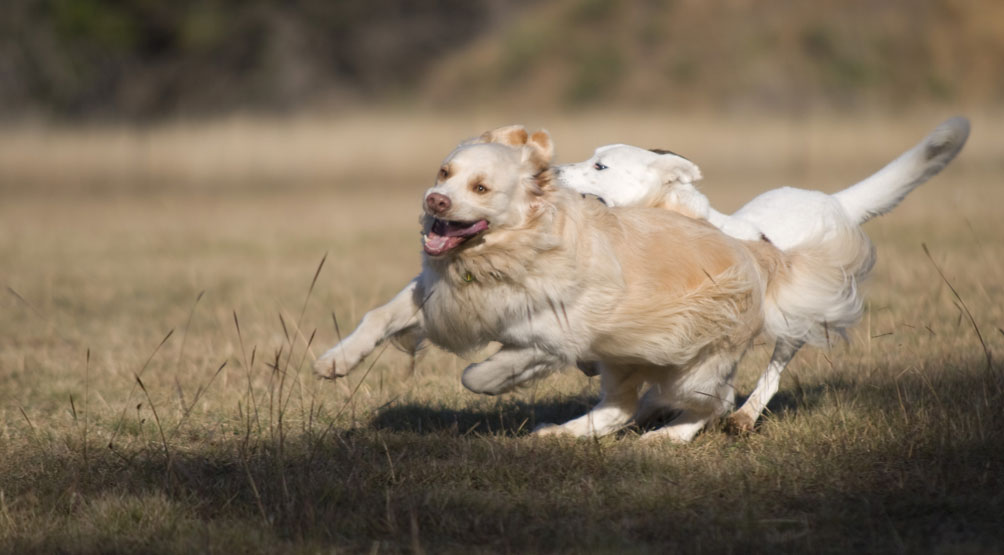
Delta Behavioural Trainer Karin Larsen Bridge from Get S.M.A.R.T. Dogs shares tips on keeping your dog active indoors and out through the winter months.
Winter is a time when many people are inclined to slow down, stay indoors and take advantage of long cold nights in front of the fireplace. In the northern hemisphere, hibernation may make sense; it can be pretty hard to go outdoors to train agility in snow-covered fields or even to walk on ice-slick footpaths. In our great southern land, however, winter can be the best time to train and exercise ourselves and our dogs.
Many dog sports, such as sledding and endurance tests, are performed only in winter to avoid heat stress. Tracking trials, where dogs follow scented trails laid in dense bush, also take place in winter to reduce the risk of snakebite. Even the all-year sport of agility climaxes in winter and spring before the weather becomes too hot for top performances. Most dogs prefer the cold weather and even the few that don’t can be accessorised to cope.
Getting fit and staying fit
Obesity is not only a growing problem for our society, but also for the dogs that share our homes. Reducing food intake and increasing exercise is the only known cure for the problem, but most mature dogs, like people, wont exercise freely around a back garden; they need motivation. To be sure you and your dog don’t fall victim to the shorter, colder days of winter, consciously plan a realistic fitness routine including indoor and outdoor activities and stick to it.
Outdoor activities
Owners of performance dogs spend a lot of time and effort working out a fitness program for their canine athletes. While most pet owners do not need to be so vigilant, it is helpful to understand the benefits and different effects of different exercises.
Benefits of exercise
builds strong muscles
improves metabolism
helps to safeguard joints against injury
develops the respiratory and cardiovascular systems
creates feel good endorphins in the dogs brain
helps create a contented dog less likely to engage in destructive behaviour, boredom barking and self-mutilation.
There are two main categories of exercise: strength building and endurance training. Short-duration, high-intensity exercises, such as retrieving, chasing and playing with other dogs, tend to build strength and muscle tone. Roadwork with your dog, like brisk walking, cycling and jogging for a minimum of 30 minutes, develops the respiratory and cardiovascular system to improve your dogs endurance.
While a combination of the two types of exercise is always recommended, winter is the ideal time for longer endurance exercises as the ever-present risk of heat stress is greatly reduced.
For most people who simply want a healthy, contented pet, the best, easiest and most efficient exercise is a daily walk. Ideally, try to walk at a pace that will allow your dog to trot rather than walk. If that is difficult for you, try using an extendable lead to give your dog greater freedom and more exercise. Bushwalking in state forests is also ideal. (Unfortunately, dogs are not allowed in any national parks.) Take a ball along and stop at the park for some short, high-intensity strength-building games of retrieve. Follow with a warm-down walk home (see below).
The shorter days of winter may mean you have to walk your dog in the dark either early in the morning or later in the evening. If this is the case, be sure both you and your dog wear reflective clothing. Strobe-lit collars and reflective leg straps are now available for dogs, as well as balls that are luminescent or flash when they are thrown. Other night time possibilities are sporting fields on training nights as well as many dog training clubs that conduct evening classes.
Nearly all dogs will benefit from some type of exercise. In older dogs and dogs with joint problems, exercise keeps the heart and respiratory systems strong as well as providing muscular support for the ageing joints. It is especially important to keep your dogs exercise consistent and not stop and start with the seasons. For individual problems, consult with your veterinarian whose recommendations will undoubtedly include common sense and a little and often regime.
Warm-ups and cool-downs
A warm-up is always advisable before any vigorous exercise, especially in winter or for older dogs which may suffer from joint stiffness. Warm-ups can be beneficial any time at home to stretch out limbs, lubricate the joints and generally improve circulation.
You can start a warm-up by running your open hands down along your dogs spine from nose to tail to increase circulation. Gently stroke the face, the ribs, the legs and the tail always move in the direction of the hair from the spine downwards.
* Teach your dog to spin. From a stand, hold a treat and get your dog to spin clockwise toward his tail. Repeat in both directions several times. Note which direction is easier for your dog most dogs will have a distinct preference. You will need to spin more often on the stiffer side.
* The upside down stretch. If your dog is happy to be handled, straddle across his back with your head facing his tail. Lift the hindquarters and slowly and gently stretch out the back legs. Always apply only the gentlest of pressure and stop if there is undue resistance. The aim is to gently stretch the dog across the length of his back. Add a tummy rub and soon your dog will learn to enjoy this stretch immensely.
Cool downs are important whenever your dog has exerted itself, as blood may pool in the extremities and actually cause the dog to become dizzy. Slow walking for five minutes is the best cool down and should always be done before allowing your dog to have a moderate drink of water.
If you get home late or really simply can’t face stepping out into the cold night air, there are lots of indoor activities that can provide the physical and mental stimulation your dog craves.
Indoor activities
1. Tricks for fitness or doggy yoga
The following simple tricks will help to exercise and strengthen your dog as well as make it a lot of fun. Dogs of different shapes and sizes will find some easier than others so always use common sense, reward in small steps and stop if your dog seems stressed or in pain. Some of these exercises should be modified or not attempted with dogs that are obese or that suffer from joint or spinal problems.
Sit-up and beg this popular trick, so easy for many small dogs, is a great exercise to strengthen your dogs spine and hindquarters as well as improving balance and co-ordination. Expect to take at least a week to train your dog to do this behaviour, not only for understanding, but also allowing the necessary muscle groups to become activated and strengthened. The easiest way to teach this exercise is simply with a treat, luring the dog upwards. It may help to start in a corner where your dog has more support. Reward small steps at a time, starting with any attempt to lift the forequarters. If your dog is comfortable, try the next level up walking or dancing back and forth on the hind legs. Again, a great way to build strength and co-ordination, but don’t overdo it; this is strenuous exercise. The hardest level is to stand still on hind legs only attempt this if your dog really enjoys this exercise. Your dogs natural body shape and size will determine how easily he can perform the sit-up; large angular dogs will probably find it a lot more difficult than your average terrier.
Play bow this well-known natural doggy stretch is great for the muscles and ligaments of the upper body as well as strengthening the haunches and spine. The easiest way to take advantage of this stretch is simply to say bow, when your dog gets up and has a stretch followed immediately by a reward, such as a short game of chase or a treat. If you bend forward in a similar position as you say bow, your dog will soon associate your body language (visual cue) and word (audio cue) with the behaviour and play bow on cue.
Wave If your dog already knows shake hands, the wave will be easy to teach. Simply raise your hand a little higher and don’t allow your dog to actually make contact. Reward small steps in the desired direction until your dog is happy to lift a paw and waves with a relatively straight front leg. This is a great shoulder stretch and strengthener for the bicep tendon.
Catch A great game to improve your dogs eye-mouth coordination while increasing attention, concentration and flexibility and a great way to stimulate mind and body. Use either part of your dogs dinner ration (so much more interesting than gulping it down from a bowl) or low-calorie treats, like popcorn or cereal bits. Or, if you prefer, use a soft toy or ball. The worse your dog seems to be at this skill, the more benefit he will derive from practice.
Crawl The crawl will help your dog build a strong rear end especially if he keeps his hind legs tucked underneath rather than stretched out behind. It also works the spine, shoulders and neck. Sit on the floor and use a treat to lure your dog under your legs. Reward in small steps. When your dog is following the treat reliably, add the cue crawl and slowly change your position.
Back up This simple exercise builds strength and suppleness through the spine and hindquarters, improves coordination and body awareness and is really useful in tight situations, such as doorways, where you may need your dog to step back. Back can be taught in many ways. The main thing is to be on the lookout for when your dog naturally steps back. For many dogs this is when you hold a toy or if you gently walk into your dog as he stands in front of you be ready to label the step back with the word back and follow with a reward.
Tug Games of tug are a wonderful spine-flexing, overall-strengthening exercise that dogs love. Just be sure to teach the rules of the game before you start. An on and off command should reliably start and stop the game of tug. Interrupt play every half a minute or so and ask for a sit or down. Reward a correct response by continuing play or with a treat. Make certain children stick to the rules by supervising games as necessary and quit play immediately if the dog seems to be getting over-excited.
2. Basic training
Indoors is the best place to teach your dog any new behaviour. Once your dog understands a new concept you can take it on the road by asking for the same behaviour in areas with greater distractions. The ABCs of dog training are a reliable response to Sit, Stand and Down. Practise the three positions at home until they are absolutely reliable then start adding new challenges. Will your dog respond to a hand signal alone? Voice only? What if you turn your back does your dog still respond correctly? Add distance from what distance will your dog respond? What if you cue from another room? Next time your bored dog starts pushing for attention, try 15 position changes in quick succession all with a lovely smile on your face and a juicy treat at the end. Still energetic? Go for 15 more. Soon your dog will feel mentally and physically tired and decide his bed in the corner is looking pretty good again all without having stepped a foot outside your door.
3. Indoor instincts
Hide and Seek is a great way to expend lots of mental and physical energy indoors. You can hide food treats, favourite toys or even people. Start with a yummy treat or favourite toy. Show it to your dog and tell him to sit, stay (or get someone to hold him). Hide the object somewhere simple, such as under a pillow or behind a table leg. At this point your dog is allowed to watch. Go back to your dog and release him in an excited voice with a cue such as find it! Your dog will race to your hiding spot, feeling very clever, and be rewarded with his find. Repeat several times, hiding the treat in different places. Next, remove your dog from the room while you hide the treat in one of the places you used before. Bring him in and tell him, Find It! Your dog will rush around looking for the treat. Depending on how smell oriented your dog is, he may first look in the previous spots but soon realise the quickest way to get the goods is literally to follow his nose!
There are lots of variations to this game. If you prefer, you can hide multiple treats, then allow your dog into the room while encouraging him to find them all. Your dog may spend quite a lot of time double checking he hasnt missed any with this one! If you hide a toy, reward your dog with a short game. If you hide a person, they might want to also reward the find with a little treat. Once your dog understands this game, it can develop into a traditional game of hide-and-seek with one person hiding and your dog looking throughout the house. My Border Collie goes crazy for this game; not only does he get to use his nose, but in his mind he is seeking out and rounding up the stray sheep oops, I mean kid!
Doggy downtime
Everyone needs a little downtime now and then, but there’s still no need to ignore your dog. After a tough day, try a little touch therapy. Get out a glass of wine and a doggy comb and incorporate a good grooming/massage session into the front-of-TV wind down. Your dog will benefit from the attention and you’ll probably both agree that a snuggle on the couch is probably the best part of a cold winter night.
All dogs deserve to stay healthy, trim and active. The main requirement for a fitness regime is not space, but time your time spent indoors or out, winter or summer, doing anything and everything together.



